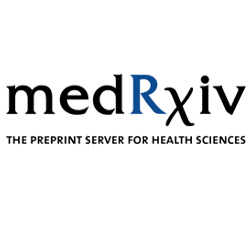Genomic epidemiology identifies emergence and rapid transmission of SARS-CoV-2 B.1.1.7 in the United States
View ORCID ProfileNicole L. Washington, Karthik Gangavarapu, Mark Zeller, A lexandre Bolze, Elizabeth T. Cirulli, Kelly M. Schiabor Barrett Barrett, Brendan B. Larsen, Catelyn Anderson, Simon White, Tyler Ca ssens, Sharoni Jacobs, Geraint Levan, Jason Nguyen , Jimmy M. Ramirez III, Charlotte Rivera-Garcia, Efren Sandoval, Xueqing Wang, David Wong, Emily Spencer, Refugio Robles-Sikisaka, Ezra Kurzban, Laura D Hughes, Xianding Deng, Candace Wang, Venice Serv ellita, Holly Valentine, Peter De Hoff, Phoebe Seaver, Shashank Sathe, Kimberly Giet zen, Brad Sickler, Jay Antico, Kelly Hoon, Jingtao Liu, Aaron Harding, Omid Bakhtar, Tracy Basler, B rett Austin, Magnus Isaksson, Phil Febbo, David Be cker, Marc Laurent, Eric McDonald, Gene W. Yeo, Rob Knight, Louise C. Laurent, Eileen de Feo, Michael Worobey, Charles Chiu, Marc A. Suchard, James T. Lu, William Lee, Kristian G. Andersen
doi: https://doi.org/10.1101/2021.02.06.21251159
This article is a preprint and has not been certified by peer review [what does this mean?]. It reports new medical research that has yet to be evaluated and so should not be used to guide clinical practice.Abstract
As of January of 2021, the highly transmissible B.1.1.7 variant of SARS-CoV-2, which was first identified in the United Kingdom (U.K.), has gained a strong foothold across the world. Because of the sudden and rapid rise of B.1.1.7, we investigated the prevalence and growth dynamics of this variant in the United States (U.S.), tracking it back to its early emergence and onward local transmission. We found that the RT-qPCR testing anomaly of S gene target failure (SGTF), first observed in the U.K., was a reliable proxy for B.1.1.7 detection. We sequenced 212 B.1.1.7 SARS-CoV-2 genomes collected from testing facilities in the U.S. from December 2020 to January 2021. We found that while the fraction of B.1.1.7 among SGTF samples varied by state, detection of the variant increased at a logistic rate similar to those observed elsewhere, with a doubling rate of a little over a week and an increased transmission rate of 35-45%. By performing time-aware Bayesian phylodynamic analyses, we revealed several independent introductions of B.1.1.7 into the U.S. as early as late November 2020, with onward community transmission enabling the variant to spread to at least 30 states as of January 2021.
Our study shows that the U.S. is on a similar trajectory as other countries where B.1.1.7 rapidly became the dominant SARS-CoV-2 variant, requiring immediate and decisive action to minimize COVID-19 morbidity and mortality.
Competing Interest Statement
NLW, AB, ETC, KMSB, SW, CRG, ES, TC, XW, JN, JMR, GL, DW, DB, ML, MI, SJ, JTL, and WL are employees of Helix. KG, BS, JA, KH, JL, EdF, and PGF are employees of Illumina. JN, CRG, ML own stock in ILMN.
Funding Statement
This work has been funded by CDC BAA contracts 75D30121P10258 (Illumina, Helix) and 75D30120C09795 (GWY, RK, LCL, KGA), NIH NIAID 3U19AI135995-03S2 (MAS, KGA), U19AI135995 (MAS, KGA), U01AI151812 (KGA), NIH NCATS UL1TR002550 (KGA), the Innovative Genomics Institute (CYC), and the New Frontiers in Research Fund provided by the Canadian Institutes of Health Research (CYC).
Author Declarations
I confirm all relevant ethical guidelines have been followed, and any necessary IRB and/or ethics committee approvals have been obtained.
-------------------------------------------------------------
UK coronavirus strain is doubling in the U.S. every 10 days, study finds
PUBLISHED SUN, FEB 7 20212:36 PM ESTUPDATED SUN, FEB 7 202111:12 PM EST
The mutant coronavirus strain first identified in the United Kingdom remains at low levels in the United States but is doubling its reach approximately every 10 days, according to a study published by researchers on Sunday.
The study bolstered modeling done by the Centers for Disease Control and Prevention, which predicted last month that the more contagious variant could be the dominant strain in the U.S. by March.
The U.S. still has time to take steps to slow down the new virus strain, the researchers wrote, but they warned that without “decisive and immediate public health action” the variant “will likely have devastating consequences to COVID-19 mortality and morbidity in the U.S. in a few months.”
more..

Comment